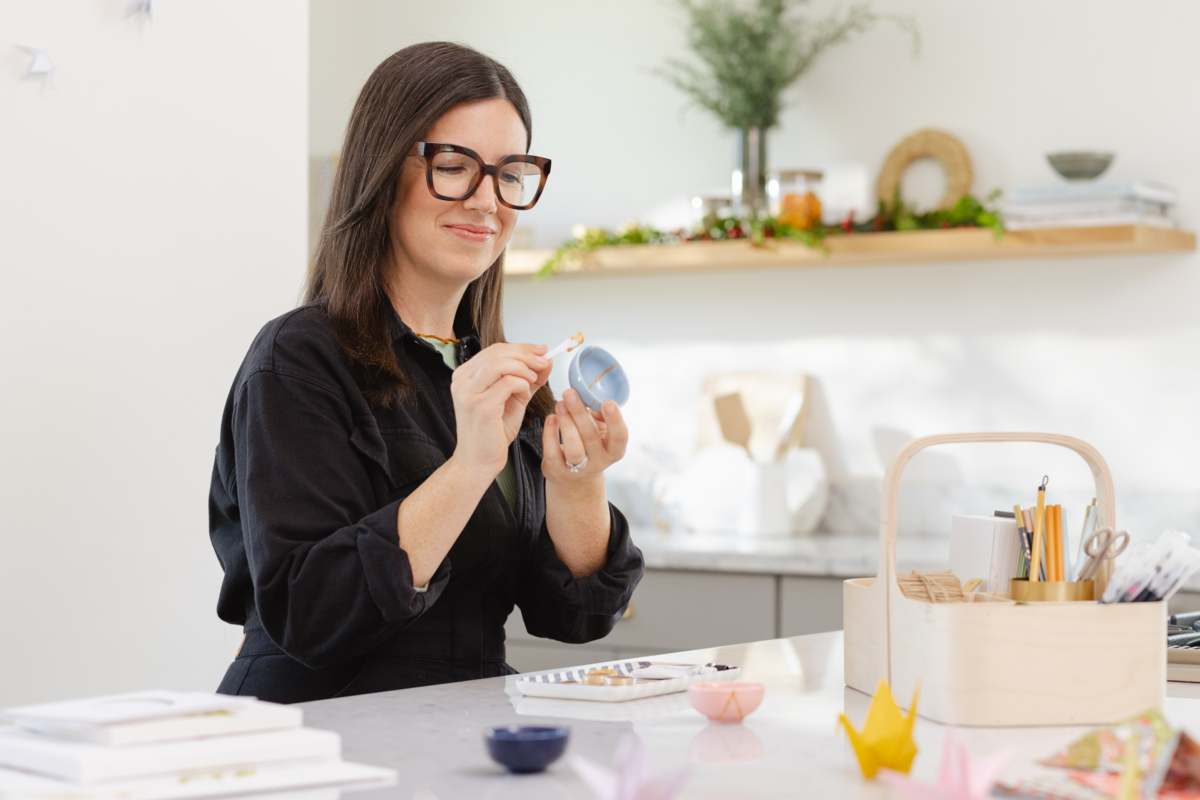If something sparks joy for you but breaks, learning to mend and reconstruct that item is not only empowering — it can also act as a lesson in material, integrity and form. The Japanese craft of kintsugi can teach you how to appreciate your own handiwork and increase your compassion for your belongings: it feels wildly satisfying to fix a broken object instead of discarding it.
What is Kintsugi?
Kintsugi — which means “join with gold” — is the Japanese art of repairing broken objects, often ceramic pottery or glass. Traditionally, gold lacquer is used to piece shards together again, creating a more beautiful object through the acts of breaking and repair. Kintsugi encourages us to fix rather than discard, thus placing a higher value on the objects we bring into our lives.
How to Kintsugi
Urushi, a Japanese lacquer derived from tree sap, is the traditional material for kintsugi mending. Lacquer adheres the pieces together, is allowed to dry and then sanded smooth. Gold (and gold-appearing) or other finishing powder is dusted over the lacquer. Some craftsmen use different metals too — like silver, platinum or copper.
The Japanese Philosophy Behind Kintsugi
Japanese craftspeople have engaged in this technique for centuries, but anyone can take part in this restorative process of rebuilding a beloved object with newfound elegance.
Kintsugi is aligned with several well-known Japanese beliefs and philosophies. The first is “wabi-sabi” — the acceptance of impermanence and imperfection, an inevitable part of our world. Wabi-sabi encourages the delight in irregularities and inconsistencies of the human hand, rather than striving for perfection.
The Japanese philosophy of “mottainai” regrets squandering and advocates for minimizing waste. The longer the life of our objects, the fewer objects we have to buy that use up precious resources. Kintsugi can make this relationship with breakage one of joy and learning instead of regret and loss.
The final concept is “mushin,” a mental flow that frees you from the angst of change and allows you to easily accept fate. Practicing mushin guides us towards a reaction of mildness and quiet acceptance. The power to repair favorite objects with kintsugi helps this mental fortitude, making new life possible.
Types of Kintsugi
Traditional: Traditional kintsugi reassembles broken pieces at the cracks, connecting the parts with thin lines of golden lacquer.
The “Piece” Method: The “piece” method, called “makienaoshi” replaces an entire portion of missing material with gold lacquer, so the lost piece looks like it has been transformed into gold.
Joint-Call Kintsugi: The final type is “joint-call.” A missing fragment of the object is replaced with some other material, often with a different pattern or look, like a puzzle piece from a different box mixed in. The intentional non-matching patchwork creates a new object that carries the echoes of others.
Perfectly Imperfect
Kintsugi celebrates a break, honoring the story of the object, its ruin and repair. Mistakes and accidents are simply a part of the experience of living. Rather than trying to restore a broken object to its original glory, kintsugi focuses on creating a newly imagined, distinctive vessel.
It is not the end of the world if something is not fixable. Sometimes functionality or joy cannot be restored from fragments. Don’t hold on to items that have truly run their course. Simply thank the object for its service and discard the pieces with gratitude.
Our scars are what make us uniquely beautiful. By embracing the perfectly imperfect, we can use this beautiful craft to breathe new life into our oldest treasures and practice walking through our daily lives with grace and loving acceptance.










